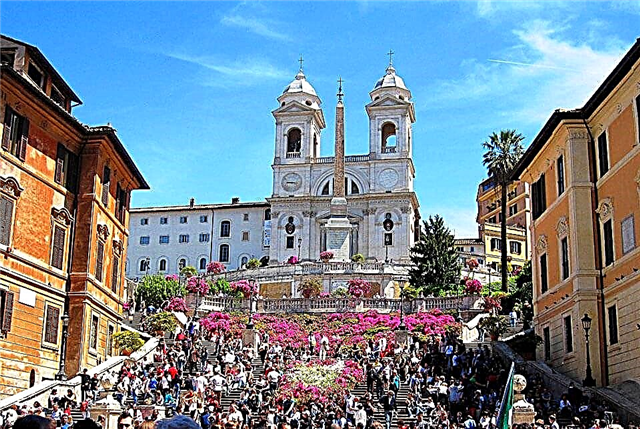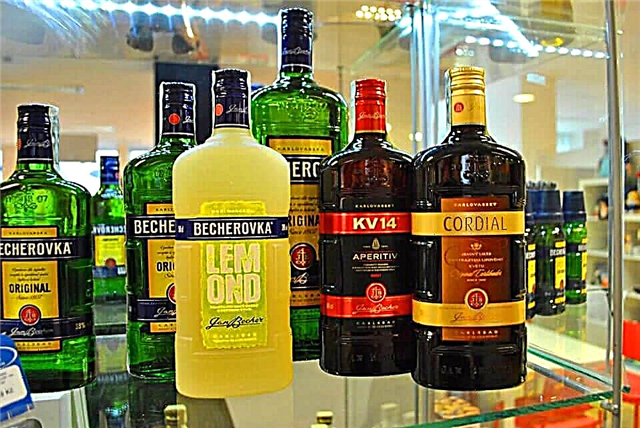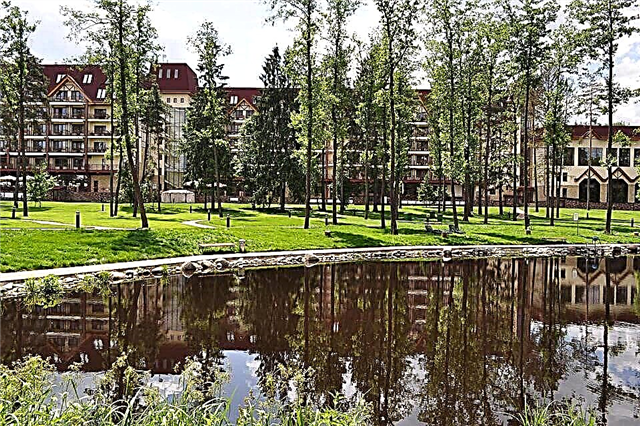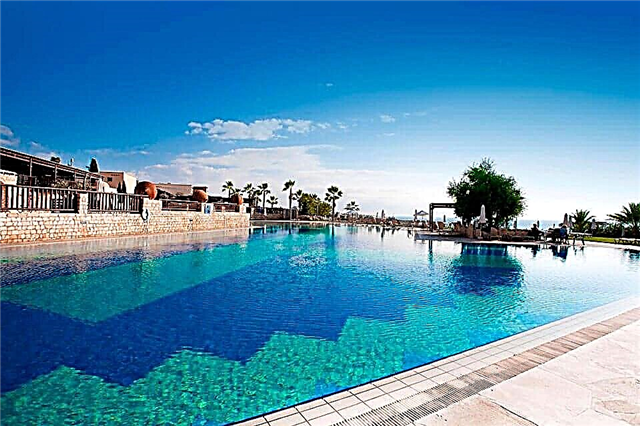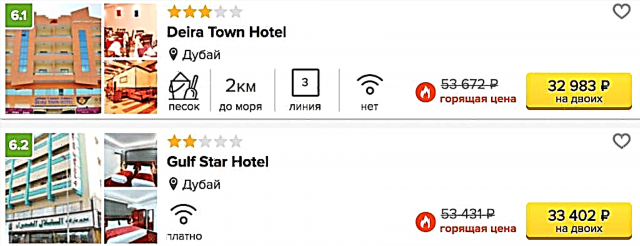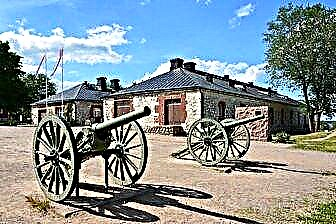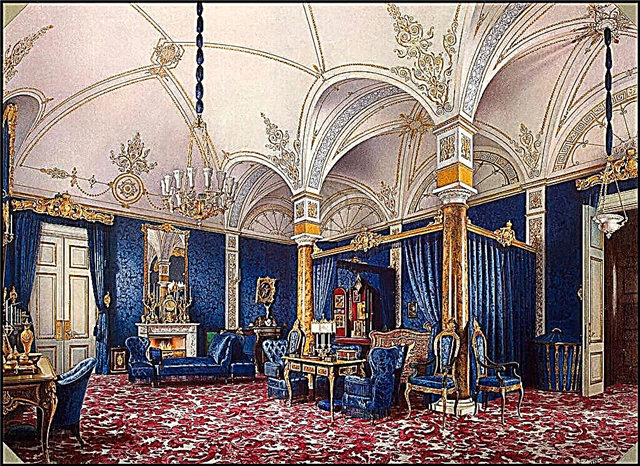The Winter Palace of Peter I in St. Petersburg has survived only partially. This is a unique architectural specimen of the early 18th century, once the main dominant of the Nevskaya Naberezhnaya, and today it has become one of the components of the Hermitage's museum complex.
Construction history
The idea of building a cozy house for the royal family was first realized back in 1712, when the Wedding Chambers were erected between Millionnaya Street and the partially completed Neva Embankment. However, they did not fully correspond to the taste of the monarch. Gradually, the embankment expanded to the north, and it became possible to build a personal residence that would be more consistent with the character of the king. From this, a rather tragic chain of events began, which leads us to the currently existing Winter Palace of Peter I, which so little resembles the original house of the ruling family.
First stage

Back in 1715, when Peter the Great was considering the possibility of erecting a building opposite the Winter Canal, which then existed mainly on paper, there were not even foundations on the site of the modern Winter Palace. Mattarnovi took up the realization of the wishes of the great sovereign, who prepared the project for the Winter House and even erected the western facade. However, it did not correspond too much to the status of Peter I and rather resembled the house of some rather wealthy burgher, rusticated and decorated with pilasters of the most ascetic Doric order. The royal title of the future owner was only reminiscent of allegorical sculptures, which nestled comfortably in a traditional triangular pediment. The building was crowned with a crown.
However, the original project was never fully implemented. Oddly enough, this was prevented by the return of the sovereign himself from Europe in 1718. He brought with him new ideas and a new vision for his Winter Home. Significant changes were made to the drawings and soon the interior decoration began. According to the sketches of the chief architect, the interior was dominated by oak furniture, and the walls were decorated with red marble. The stairs and floors were also made of oak, imitating the French style.
According to the idea of the monarch, the complex of the house included not only living quarters, but also a boathouse, that is, a room that is usually used for repair work or construction, for example, airships. But, at the time of the Great Reformer, the latter did not exist yet, and the sea was the real passion of the monarch, therefore Peter's sailing boat was in the boathouse. The house owned a small harbor, and a small inner garden with fountains was laid out for Peter's wife.
New Winter Embankments Chambers

The construction was not completed. It had to be temporarily interrupted, as Georg Mattarnovi, who led this project, suddenly died for everyone. Meanwhile, from what he had planned, only the foundations and the western part of the structure were completed. To continue the work, Nikolai Gebel was called in, who already took up the central and eastern parts of the palace. The ceremonial halls, the design of which was extremely pompous, overlooked the Neva. So that the western facade, made in the "burgher" style, does not get out of the general mood, the western facade was made in the same spirit, while the center was purely baroque.
A strong Roman influence was clearly felt in its design. In some way it resembled the solemn beauty of the triumphal arch of the Roman kings. At the same time, German influence did not disappear, which was more clearly imprinted in the appearance of a central cartouche with complicated outlines and several allegorical figures that symbolized the power of Peter the Great.
Even during Peter's lifetime, the Winter Palace saw one of the most magnificent feasts in the Mother See: the betrothal of his favorite Anna and the Duke of Holstein, a large autumn feast of 1723, which was held in the recently completed Kavalier Hall, and other events. Some celebrations ended with the brightest fireworks on the ice of the Neva. Here, in the Winter Palace, Peter the Great died. His "Sad" hall was the Great Hall, where his daughter's betrothal took place.
Many culturologists believe that with the erection of the Winter Palace of Peter I, he played a funeral march through the modest tsarist dwellings. Now it was the Winter Palace that became the most pompous structure of St. Petersburg being built at that time. In addition, the architect tried to create it, taking into account the atmosphere in which the rest of the Neva was built up. Thanks to his efforts, the palace managed to organically blend into the general image of the Embankment. Thus, the foundations of ensemble architecture were laid, the center of which is still the Northern capital.
Winter Palace of Catherine I

The rise of a new monarch has led to the rise of a new star in the arena of architectural exploration. Such a star was Domenico Trezzini, who was instructed to expand the palace in the direction of Bolshaya Nemetskaya Street as soon as possible. The work was large-scale, since the harbor was filled up by the Empress's instructions, and all the buildings that seemed to her to be scattered had to be demolished for the subsequent erection of a long two-story building with rhythmic division of facades, which is characteristic of the architecture of St. Petersburg at that time.
This union was to end with the creation of a pompous ceremonial arch to enter the large courtyard. However, the changes turned out to be too large-scale, and Catherine could not fully enjoy them, dying before the end of construction.
Location
It may seem to many that the site for the construction of the Winter Palace was chosen almost by chance. What motives did you need to be guided by in order to decide to build a palace right in the middle of the houses of not the richest residents of St. Petersburg? The answer is pretty simple. It was from here that the best panorama of the Northern capital opened with the majestic Neva, the spit of Vasilyevsky Island and Malaya Neva, which later flowed into the sea.
Discovery in the 20th century

After the death of Catherine I, the Winter Palace of Peter the Great gradually began to decline. Anna Ioannovna, although she transported the courtyard from Moscow back to the Northern capital, was little concerned about the safety of this amazing architectural nursery and chose to stay at Apraksin's house. The old Winter Palace began to be used from time to time, until at the end of the eighteenth century the very critical moment in its history came - it was decided to demolish the Winter Palace in order to build an even more magnificent Hermitage Theater, Djokamo Kvaregi, in its place. It would seem that here it would be necessary to put an end to the biography of this once sparkling place, but the circumstances were different.
Nicholas I made an attempt to find the very Great Hall where the first owner of the Winter Palace died, but this venture turned out to be a failure. Subsequently, already in the last third of the 20th century, a number of attempts were made to find fragments of the Winter Palace. This time, luck turned out to be on the side of the seekers, and it soon became clear that Quarenghi, due to an insufficient amount of time, did not completely destroy the old palace. Thus, separate rooms of the basement and first floors were buried under the stages. Gradually, more and more new premises were opened: part of the ceremonial courtyard, several "Small tents", which were erected during the reign of Peter, and even the monarch's office itself.
The latter has an excellently preserved Dutch-style fireplace and stove. The furnishings were also almost intact.This allowed researchers to obtain numerous artifacts that have become part of the Hermitage's collections. The last major find was the chambers of Catherine I, built by Trezzini. Twelve similarly well-preserved rooms were scattered along the Winter Canal.
The work was really painstaking, since researchers and architects did not confine themselves to passive study of correspondence, drawings and sketches. The opening of the premises was also not enough for them. The craftsmen began to remove layers of plaster layer by layer in order to discover medallions, rustic materials and remnants of paint that had been applied to the walls during the first work on the decoration of the Winter Palace.
Premises and interiors

Some of the interiors and rooms have been restored, others have been meticulously recreated based on documents, memories and drawings. There is a permanent exhibition in them, which includes some personal belongings of Peter I, a lathe, some tools for carpentry. Guests of the palace can fully immerse themselves in the richness of the atmosphere that reigned in the Old Winter Palace: Dutch panels, oak shutters and skilful window frames, inlaid parquet floors. You can visit the following halls: study, dining room, turner and the front yard.
The interior of the office is decorated with paintings by Mommers. Some trifles, such as an amber box presented to the monarch on one of his travels by the Prussian king, a solar and mechanical clock, an English office, allow you to get a clearer idea of the king's personality. The pearl of the main courtyard is the carnival sleigh and the monarch's garden carriage. The latter is considered to be perhaps the rarest example of a recreational carriage typical of the Peter the Great era.
Opening hours and ticket prices
The Winter Palace of Peter the Great is open to the public from 10:30 to 18:00 on Tuesdays, Thursdays, Saturdays and Sundays. Monday is a day off. On Wednesdays and Fridays, tourists can enjoy the exhibitions from 10:30 to 21:00. Regardless of the day, ticket offices close an hour earlier than the palace itself. May 9 is also a public holiday.
There are two options for purchasing tickets. In the first case, a boulet will cost about 600-700 rubles, but with it you can get into all the components of the Hermitage. If you plan to focus your attention only on the Winter Palace, you have the opportunity to purchase a ticket for 300 rubles. Students and cadets can enter the palace free of charge. The same goes for children. There is one more opportunity to see the galleries of the Winter Palace without paying a penny. The first Thursday of each month is the day of free access to the complex.
Where is it located and how to get there
The Winter Palace is located at 32 Dvortsovaya Embankment. The palace is quite easy to get to, since it is located at the very beginning of Nevsky Prospekt. In the immediate vicinity is the Admiralteyskaya metro station. It should be borne in mind that the entrance to the Winter Palace looks rather unremarkable. To find it, you have to go around the Hermitage on the right side (to the right, if you look at the facade of the Hermitage). Then walk along the notorious St. Petersburg Winter Canal to find yourself on the Embankment. You will hardly miss the desired facade - brownish against the background of light blue walls.


